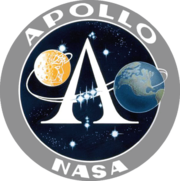SA-3 (Apollo)

SA-3 at liftoff from Pad 34
|
|||||
| Mission type | Test flight | ||||
|---|---|---|---|---|---|
| Operator | NASA | ||||
| Mission duration | 4 minutes, 52 seconds | ||||
| Distance travelled | 211.41 km (131.36 mi) | ||||
| Apogee | 167.22 km (103.91 mi) | ||||
| Spacecraft properties | |||||
| Launch mass | 499,683 kg (550.8 short tons) | ||||
| Start of mission | |||||
| Launch date | November 16, 1962, 17:45:02 UTC | ||||
| Rocket | Saturn I SA-3 | ||||
| Launch site | Cape Canaveral LC-34 | ||||
| End of mission | |||||
| Destroyed |
November 16, 1962, 17:49:54 UTC (Project Highwater) |
||||
|
|||||
Saturn-Apollo 3 (SA-3) was the third flight of the Saturn I launch vehicle, the second flight of Project Highwater, and was part of the American Apollo program. The rocket was launched on November 16, 1962, from Cape Canaveral, Florida.
The Saturn I launch vehicle components were delivered to Cape Canaveral by the barge Promise on September 19, 1962, but erection of the first-stage booster onto its launch pedestal was delayed until September 21 due to a tropical depression that moved over the Florida peninsula. The dummy second and third stages (S-IV and S-V) and payload were assembled on the booster on September 24. water was loaded into the dummy stages on October 31, and the RP-1 fuel was loaded on November 14.
For this launch, Cape Canaveral director Kurt Debus asked Marshall Space Flight Center director Wernher von Braun, who was overseeing the Saturn project, that no outside visitors be allowed on NASA grounds due to the ongoing tensions of the Cuban missile crisis.
Saturn-Apollo 3 was launched at 17:45:02 on November 16, 1962, from Launch Complex 34. The only hold in the countdown sequence was for 45 minutes due to a power failure in ground support equipment. This mission was the first time the Saturn I rocket was launched with a full load of propellant, carrying approximately 750,000 pounds (340,000 kg) of fuel.
The vehicle's four inner H-1 engines shut down at 2 minutes 21.66 seconds after launch and an altitude of 38.19 miles (61.46 km), and its four outer engines shut down at 2 minutes 29.09 seconds and 44.19 miles (71.11 km); both sets burned slightly longer than was initially estimated, reaching a maximum velocity of 4,046 miles per hour (6,511 km/h). The vehicle continued to coast to an altitude of 103.91 miles (167.22 km) and range of 131.36 miles (211.41 km), at which point, 4 minutes 52 seconds after launch, officials sent a terminate command to the rocket, setting off several charges which caused the dummy stages of the vehicle to destruct. The first stage remained intact, though uncontrolled, until it impacted the Atlantic Ocean around 270 miles (430 km) from its launch site.
...
Wikipedia

